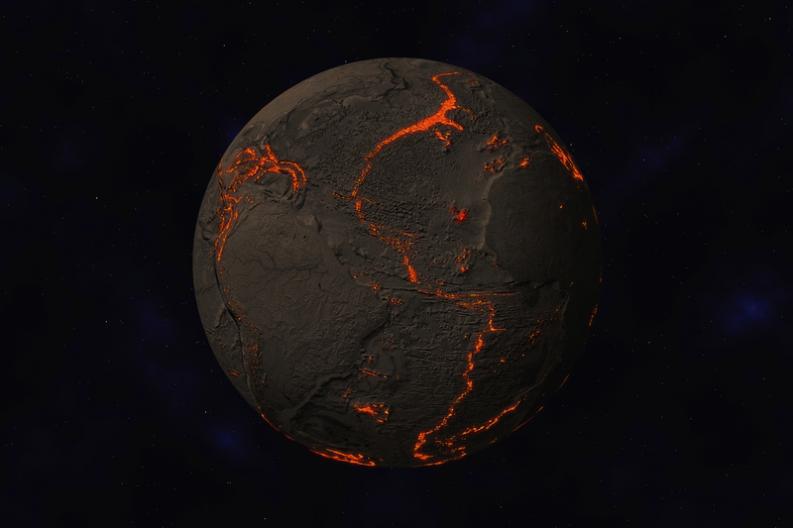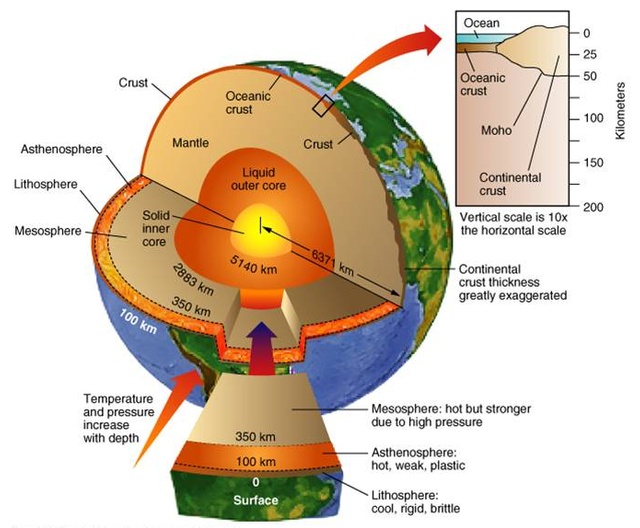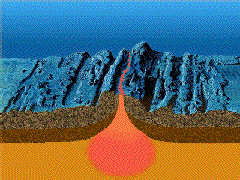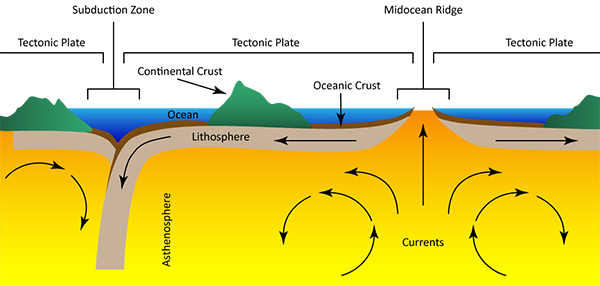The lithospheric / tectonic plates
As you well remember, we saw how the Earth is composed of a good number of large and solid rock formations that move below the surface and that have very interesting characteristics. I invite you today to delve a little more into the subject and review some fundamental concepts to understand what you touch the tectonic plates
The term "tectonic plate" refers to the structures by which our planet is formed. In geological terms, a plate is a rigid plate of solid rock that makes up the surface of the Earth (lithosphere), floating on the igneous and molten rock that makes up the center of the planet (asthenosphere). Thus a plate is a rigid fragment of lithosphere, that is to say the oceanic crust, the continental crust and the upper part of the mantle.
Earth is the only planet in the solar system with active tectonic plates, although there is evidence that in ancient times Mars, Venus and some of the Galilean satellites, such as Europe, were tectonically active.

Plate tectonics theory
These are layers that are external to the nucleus and are more solid, receiving the name of lithosphere. This theory was developed throughout the 20th century, especially between the 1950s and 1970s, continuing and becoming an advanced form of the continental drift theory, postulated by the German scientist, meteorologist and geophysicist Alfred Wegener in 1912.
however, this theory did not find an answer to the question about why continents actually moved. Today, thanks to its legacy, the Theory of tectonic plates brings us an answer.
The tectonic plates
One of the theoretical modifications of which we speak refers to the lithosphere, the outermost solid layer of the Earth. After assuming that it was a large solid rock continuum, it was known that in reality the lithosphere is arranged in a kind of mosaic with many fractions that in some points, contact with less solid material, generating cracks and separations in separate plates.
Today we know that there are more than 28 plates in total, but they are 9 the largest and most important and 6 of them are named after the continents embedded in them. Those 6 plates are those of North America, South America, Eurasia, Africa, Indo-Australian and Antarctica.
Returning to the question, this occurs when the fragment is thinner and closer to the core, where the layers have higher temperatures and less solid consistencies. All this also has a lot to do with the movement of these fragments and among other things, volcanic eruptions, earthquakes or earthquakes. So, basically, a tectonic plate or lithosphere plate is a large solid block of rock, earth, minerals and many other materials of nature that move and shape the Earth.

Types of plates
Oceanic plates. They are constituted entirely by oceanic lithosphere, thin, of basic composition: dominant iron and magnesium. Examples -> the Nazca plate, the Cocos plate and the Philippine plate.
Continental plates. They are composed of continental lithosphere. Example -> Arabian plate.
Mixed plates. They are plates constituted by continental crust and likewise partly by oceanic crust. Examples -> the South American plate and the Eurasian plate.
Movements between plates
Divergent:
movements in which the plates separate from each other and, therefore, magma emerges from deeper regions. Ocean ridges are formed; they are the zones of the lithosphere in which new oceanic crust is formed and in which the plates are separated. Example-> Mid-Atlantic dorsal.

Convergent or destructive:
movements in which one plate collides with another, forming a subduction zone (the oceanic plate sinks under the continental plate due to its greater density) or collision orogen (if the plates collide and are compressed) . Very high reliefs are created due to the folding of the plates. Example-> Himalayas.
Transformants:
movements where the plates slide with respect to each other along a transformer fault. The movement of the plates along the transformation faults can cause considerable changes in the surface. An example of this type of edge is the San Andreas fault, product of the friction between the North American plate and the Pacific plate.

Edges of plates
The edges of plates, are the regions of greater internal geological activity of the planet. In them they concentrate:
Vulcanism: most of the active volcanism is generated in the axis of the ridges, in the divergent limits.
Orogenesis: process by which mountains are formed.
Seismicity: some intraplate earthquakes occur, in fractures in central and generally stable regions of the plates, but the vast majority originates in plate edges.
http://www.indiana.edu/~g105lab/1425chap13.htm
https://quizlet.com/148833269/chapter-3-earthquakes-flash-cards/
You received a 10.0% upvote since you are not yet a member of geopolis.
To read more about us and what we do, click here.
https://steemit.com/geopolis/@geopolis/geopolis-the-community-for-global-sciences-update-3
If you do not want us to upvote and comment on your posts concerning earth and earth sciences, please reply stop to this comment and we will no longer bother you with our love ❤️